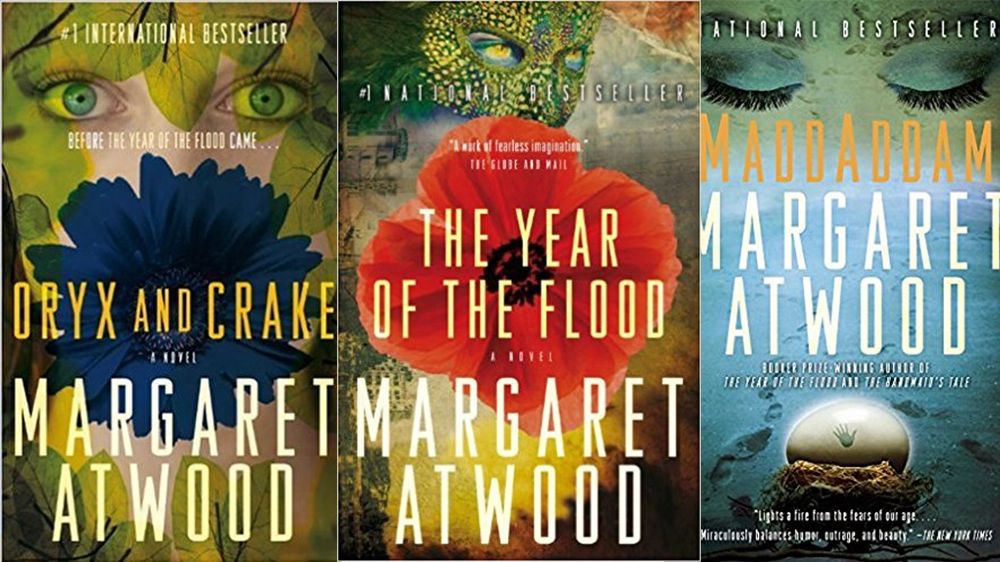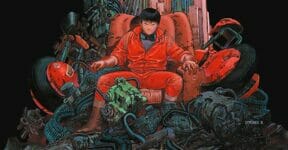What is Speculative Fiction and How Does MaddAddam Fit into the Genre?
It took Margaret Atwood a full decade to finish the dystopian MaddAddam trilogy that had started with Oryx and Crake in 2003. The follow-up novel, The Year of the Flood, came along in 2009 before the story concluded with MaddAddam in 2013. Events in the trilogy are set in the not-so-distant future when the world is essentially an apocalyptic ruin. It starts with overpopulation problems followed by a global pandemic of infertility and eventually near total extinction of the human species. This series is a work of speculative fiction.
A Short Recap
The plotlines of the first and second novels run roughly along the same timeline. MaddAddam picks up the story and brings it to a conclusion.
Oryx and Crake
Narration is given by Jimmy/Snowman through flashbacks as he recalls the events leading to the collapse of society. The demise of the human population is largely caused by a drug known as BlyssPlus, created by a bioengineer named Glenn/Crake along with a team of experts from the Extinctathon online game community.
Marketed as a Viagra-like pill with the promise of prolonged youth and health, everyone takes one. The pills have already been widely distributed when the revelation comes that they contain a virus to trigger the sterilization effect. Crake’s grand plan is to erase humans from the face of the Earth and replace them with bioengineered humanoids. Unlike people, the humanoids—also known as Crakers—are herbivorous and they only engage in sexual acts for the purpose of procreation.

While scavenging an area near where a small group of Crakers lives, Jimmy shares dramatic stories of his past friendship with Crake and their fascination with the same pornographic performer named Oryx. In the end, everything turns into a tale of betrayal and murder. Jimmy is the only one left alive of the three. The wasteland is now full of Crakers, hybrid animals, but thankfully a few other humans still exist.
The Year of the Flood
The pandemic of infertility is subsequently referred to as the “Waterless Flood.” Remnants of the pre-flood world remain in existence, such as the walled compounds for the privileged surrounded by an outside society called “pleeblands” for anyone else regarded as a degenerate. At the center of the narrative in the second novel is Toby, an employee at the Secret Burgers chain. No one really knows what kind of protein goes into the meals, hence the name.

She has been raped repeatedly by her boss until finally the “God’s Gardeners” come to the rescue. Whether or not the saviors are sent by God remains unclear, but they fit the very description of modern gardeners. They are members of a vegetarian cult established by the elusive Adam One.
The cult seems to have been aware all along about the impending Waterless Flood. Members of the cult are linked to MaddAddam, a collective whose virtual base is within the Extinctathon. Toby survives the global pandemic and lives on with the Gardeners.
MaddAddam

The third and final book, MaddAddam, begins in the aftermath of the pandemic but with some lengthy flashbacks to fill the backstory of the characters. One of the biggest points in the concluding novel is a peaceful ending. Toby, Jimmy, and other survivors finally meet and work together with the Crakers to try to rebuild civilization again. Their main obstacle is the Painballers gang comprised of vengeful brutal criminals.
Quite A Mainstream
In many science fiction stories, there is an eminent tendency to create such standard characters as technology experts but morally questionable individuals to depict the villains and a down-to-Earth layman who turns out to play the righteous role. Also, the second novel falls into the usual tricky situation involving a damsel in distress. Another mainstream option is a propensity to deliver extensive scientific exposition in creating a fictional event and incorporate an assortment of peculiar tech-savvy terminology like biorobots, genetic manipulation, hybrid animals, and so forth. Some of the best science fiction works, including Atwood’s own much-acclaimed novel The Handmaid’s Tale and Cormac McCarthy’s The Road (both are post-apocalyptic sci-fi set in the future), manage to stay away from all those typical inclinations.
In setting up the wasteland filled with genetically altered humans, Atwood’s MaddAddam trilogy leans heavily toward the mainstream options. Its world-building also lacks the colorful creativity one might expect from the author. It is a post-apocalyptic situation and humans are on the brink of extinction. The few remaining survivors join a bioengineered race to restore order. Noticeably, the characters are mostly stock as well; even the existence of the cult can be predictable because it is pretty much a post-apocalyptic trope. There is always a cult, hidden somewhere in the wasteland plotting to bring back normalcy.
Everyone is entitled to their own opinion, but it is a fact that the MaddAddam trilogy is nowhere near the level or quality of her 1985 dystopian novel The Handmaid’s Tale. In comparison, the trilogy reads like a long-winded post-apocalyptic routine where all loose ends are well-tied-up, sometimes at the inconvenience of the characters. Bear in mind that The Handmaid’s Tale is not a trilogy, but a stand-alone novel also talking about reproductive issues, albeit in an entirely different context. This is not to say that the trilogy is bad; it really is far from that. As a matter of fact, it is indeed one of her better works, but not at the top of the list.
Since the trilogy falls under the umbrella of speculative fiction—with the bioengineered humanoids, hybrid animals, and genetic manipulation of children—it can feel strange how the series does not introduce anything shocking or bewildering. That said, its complexity makes for an effective weapon to keep readers engaged and actually care about what happens to the characters.
Have you read the trilogy or any book in the series yet? Do feel free to tell us what you think of the series. We’d love to hear from you.
Other things you might want to know about
What is Speculative Fiction?
According to Derrick Craigie, the Associate Dean of Faculty for Creative Writing and Literature at Southern New Hampshire University, speculative fiction takes the liberty to introduce technologies and natural law that are strikingly different from the actual world. It explores both possibility and impossibility, giving it the freedom to explore beyond the limit of perceived reality. Please visit the SHNU Newsroom for Liberal Arts for more information.
Has the trilogy received any awards?
BBC News listed Oryx and Crake as one of the 100 most influential novels for the first time in 2019. MaddAddam received the Orion Book Award for fiction in 2014.
What are Margaret Atwood’s other popular novels?
Apart from the MaddAddam trilogy and The Handmaid’s Tale, some of Margaret Atwood’s best works (in no particular order) include:
- Surfacing (1972)
- Lady Oracle (1976)
- Life Before Man (1979)
- The Robber Bride (1993)
- Cat’s Eye (1996)
- Alias Grace (1996)
- The Blind Assassin (2000)
- The Penelopiad (2005)
- The Heart Goes Last (2015)
- Hag-Seed (2016)
If you like Margaret Atwood, then check out this: https://storiesatworldsend.com/21-incredible-quotes-by-margaret-atwood







